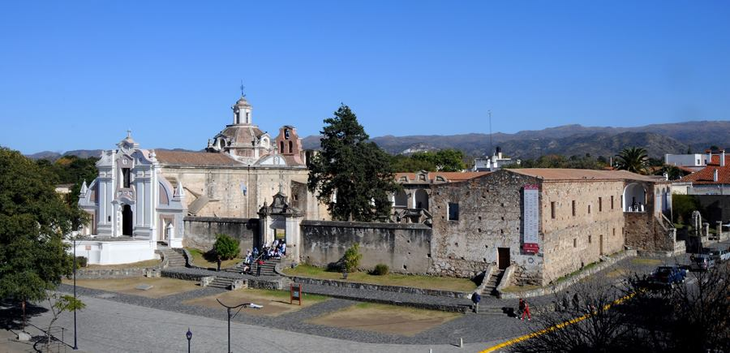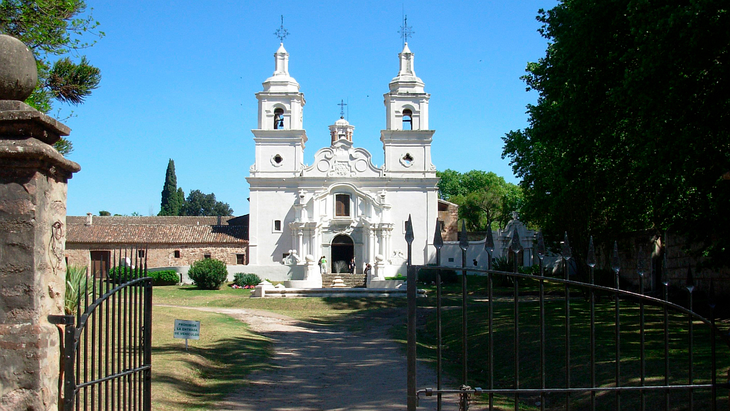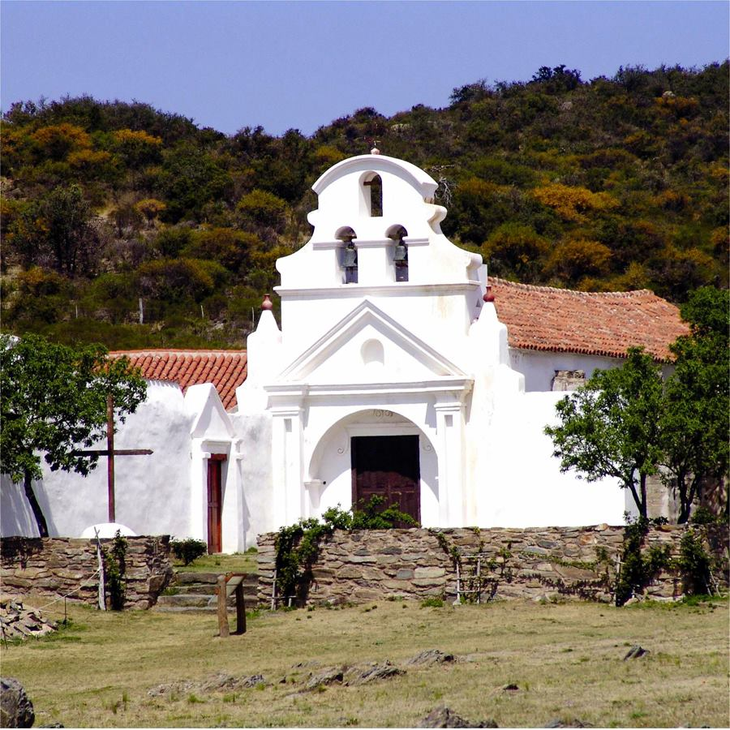According to the UNC spokesmen, the rooms respond to the monastic set type established for centuries in Europe and then transferred to America: UNa Church, contiguous cemetery, cloisters for residence of the monks and for workshops and indigenous housing. Agroganadera and wine production, meanwhile, were its registered trademark.
Visitors who travel the Jesuit applethen, they will be able to appreciate that the Jesuit legacy is not reduced to these imposing buildings but to all the spiritual, cultural, educational and productive work that deeply hit Cordoba history.
Escape to the path of the Jesuit rooms: how to get there
To perform the Camino of the rooms It can be left from Cordova In private car, in public transport or hiring the services of a receptive tourism agency that will also provide a professional guide service.
Each of the Jesuit rooms, with the exception of Jesús María, Colonia Caroya and La Candelariayou can take a full day of excursion, considering the distances to reach them.
It is a cultural tourist itinerary that allows discovering and knowing the heritage values and the global importance of these historical places, associated with landscapes, traditions and customs that mark the identity of Córdoba.
1- Estancia Colonia Caroya
It is 50 kilometers from the city of Córdoba. It was the first of the rooms organized by the Society of Jesus, back in 1616. In 1661, the hacienda was acquired by the founder of the Monserrat school, the presbyter Ignacio Duarte and Quirós, who managed to transform it into a prodigal earth with corn and wheat production, fruits, wine, honey and carob, and in a summer lot of his students.
Jesuit Stay Colonia Caroya Córdoba
When the War of Independence broke out, the Caroya stay housed the first white weapons factory to supply bayonet tips to the Northern Army. There was made, for example, the sword of General José Artigas, hero of the Eastern Band.
The stay went to the national government and in 1876, in full policy of promotion to European immigration, President Nicolás Avellaneda ordered that it be the place of accommodation of immigrants from the Friuli region, in Italy. Those same settlers would then organize the town, near the hull of the room.
The house is structured around a central courtyard. The cloister is made up of ten rooms, with furniture and objects from various eras, and a box. Currently the stay hosts a politematic museum and an interpretation center.
2- High grace stay
It is located 38 kilometers from the city of Córdoba. The construction dates from 1643 and is made up of the Church, which stands out for its facade without towers. The architecture denotes interrupted curves and pilasters of late baroque-regular influence. Today, in addition to being a tourist resource declared World Heritage by UNESCO, this Church functions as the parish of the town.
Jesuit stay Alta Gracia Córdoba

The stay also has a residence built in ELE, where the National Museum of the Jesuit Stay of Alta Gracia and Virrey Liniers house has been operated since 1977. Inside, an important collection of objects from the seventeenth, eighteenth and nineteenth centuries, as well as temporary exhibitions and a large annual program of cultural activities (concerts, conferences, courses) is protected.
The access highlights the main courtyard, which has an elegant central staircase, a work courtyard, the work, the tajamar and the ruins of the mill and the old oven. Tourists can join the guided tours that are provided around the museum; There, various rooms set the different guests who inhabited the stay: the Jesuits, the enslaved African workers, the women and the viceroy itself.
3- Estancia Jesús María
The stay of Jesús María is 4 kilometers north of the Caroya stay, following the National Route 9. Its location is not fortuitous: there passed the royal road, in its footprint towards the capital of the viceroyalty. In its lands the current Cordoba city of Jesús María originated.
Jesuit stay Jesús María Córdoba

The stay of Jesús María today is a National Jesuit Museum.
Built in 1618, The stay of Jesús María -Thoy National Jesuit Museum– It is one of the unmissable sites to know in this northern cordoba enclave. Dedicated to wine production, it was the second productive core of the system organized by the Society of Jesus.
Discovering the ancient Jesuit stay –iglesia, residence and winery, as well as the remains of old mills, perchel and tajamar – is possible through a self -guided tour. It includes testimonies that recreate the productive spaces of the time and offer to know, for example, the places where grapes for wine manufacturing were grinding. Since 2014, it is also a memory site of the Slave Route organization.
Meanwhile, within the house that the Jesuits lived, religious objects and an archaeological collection of pre -Columbian divinities are treasured.
4- Santa Catalina stay
50 kilometers from the city of Córdoba, on the way to Ascochinga, the stay of Santa Catalina appears, whose organization was initiated by the Jesuits from 1622. It is the largest architectural complex built by the company outside the provincial capital.
Jesuit stay Santa Catalina Córdoba

In the Santa Catalina stay the Jesuits dedicated themselves to fruit plantation.
From 1618, the land of Guanusacate was called Jesus Maria, since Father Pedro de Oñate, on behalf of the Society of Jesus, bought this property, which had 20,000 vine strains, mill and various tools.
In this stay, the Jesuits dedicated themselves to the planting of fruit trees. Already in 1740, they built the house-habitation and a new winery, where the “gold tears” saw the light, the first wine of the Viceroyalty of the Río de la Plata that, according to the documents, was served at the King’s table.
Over the years, he stood out as a large agricultural production center (with thousands of head of cattle, sheep and mule) and for the work with his looms and rigging. In turn, its blacksmithing, carpentry, batán, its system with two mills and the underground water conduction that came from Ongamira, several kilometers away.
With a guide, it is possible to visit it and discover how it retains the design of the seventeenth and eighteenth centuries. In addition, in it a monumental church can be seen, which has an imposing two towers facade. Next to it are the small cemetery, preceded by a portal – which repeats the style of the facade of the church – and the residence, with three courtyards, annexes and garden. Finally, separated from the main body of the stay, is the novitiate and the ranchería.
5- Estancia la Candelaria
It is the most extensive of the Jesuit stays and is located in the large mountains, northwest of the Cordoba capital, in the Cruz del Eje department. His name is a tribute to the Virgen de las Candelas.
Jesuit stay La Candelaria Córdoba

Architecturally, the construction of the La Candelaria stay combines elements of a residence with a fort.
The former mercy of land that initially belonged to Captain García de Vera and Mujica was donated by his descendants, in 1673, to the Society of Jesus with the aim of contributing to the support of the Máximo de Córdoba College. The religious quickly transformed the place into a focus of agricultural production and acquired bordering land until a property of 300 thousand hectares were constituted.
Architecturally, construction combines elements of a residence with a fort. The black slaves provided labor to erect the place and you can still find the ruins of their ranches, distant from the residence of the priests and the chapel destined for religious worship.
After the expulsion of the Jesuits, the Board of Temporary ordered its subdivision. In 1941, the stay was declared a National Historical Monument and was only in 1982 that the provincial government acquired.
The architectural complex generally has a closed aspect, organized around a rectangular central courtyard. The chapel stands out for its height and crowded facade, while the two sacristies are located next to it.
Source: Ambito
I am an author and journalist who has worked in the entertainment industry for over a decade. I currently work as a news editor at a major news website, and my focus is on covering the latest trends in entertainment. I also write occasional pieces for other outlets, and have authored two books about the entertainment industry.




